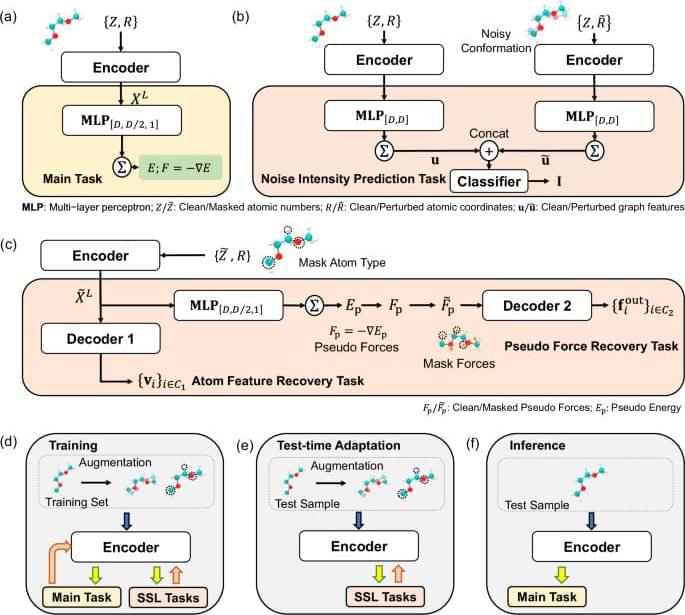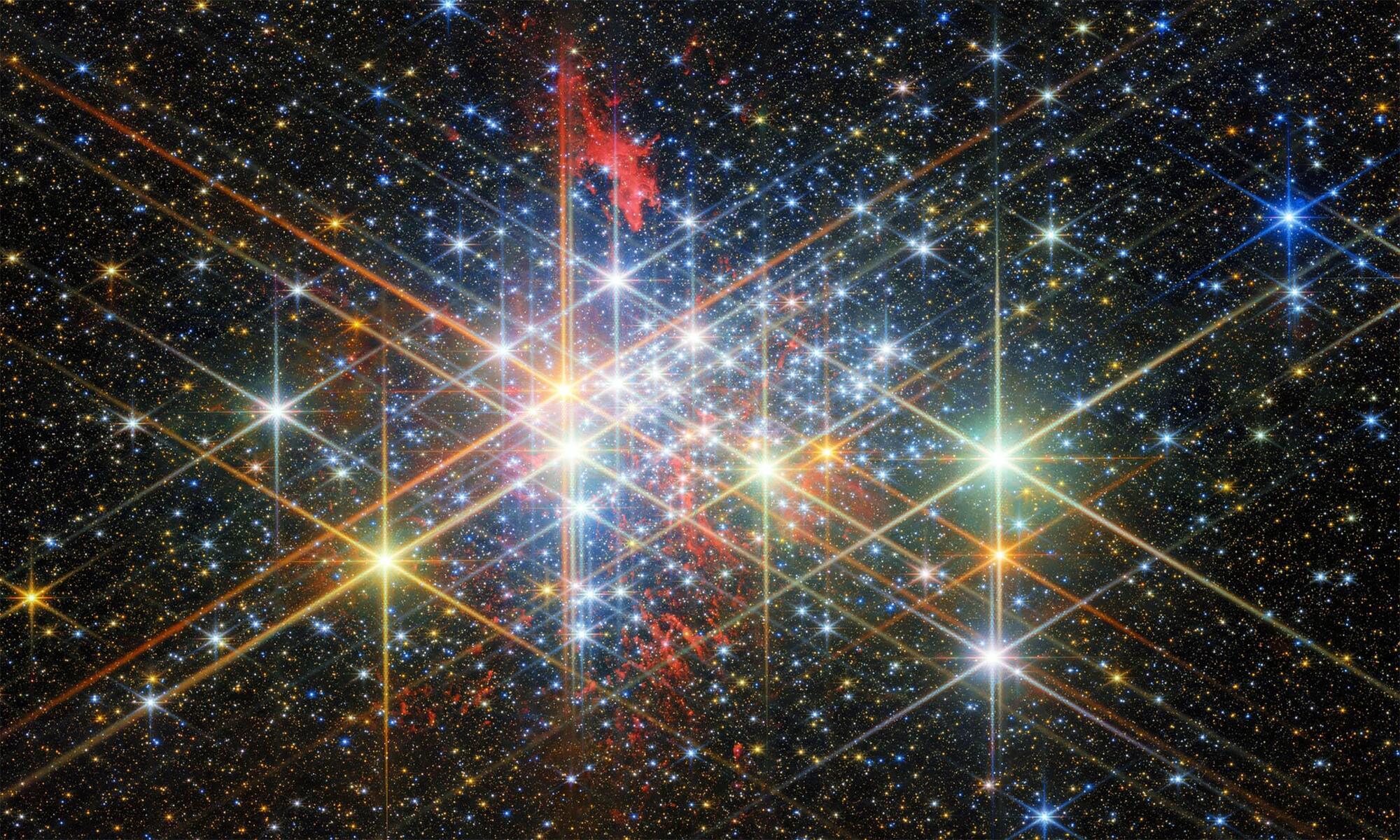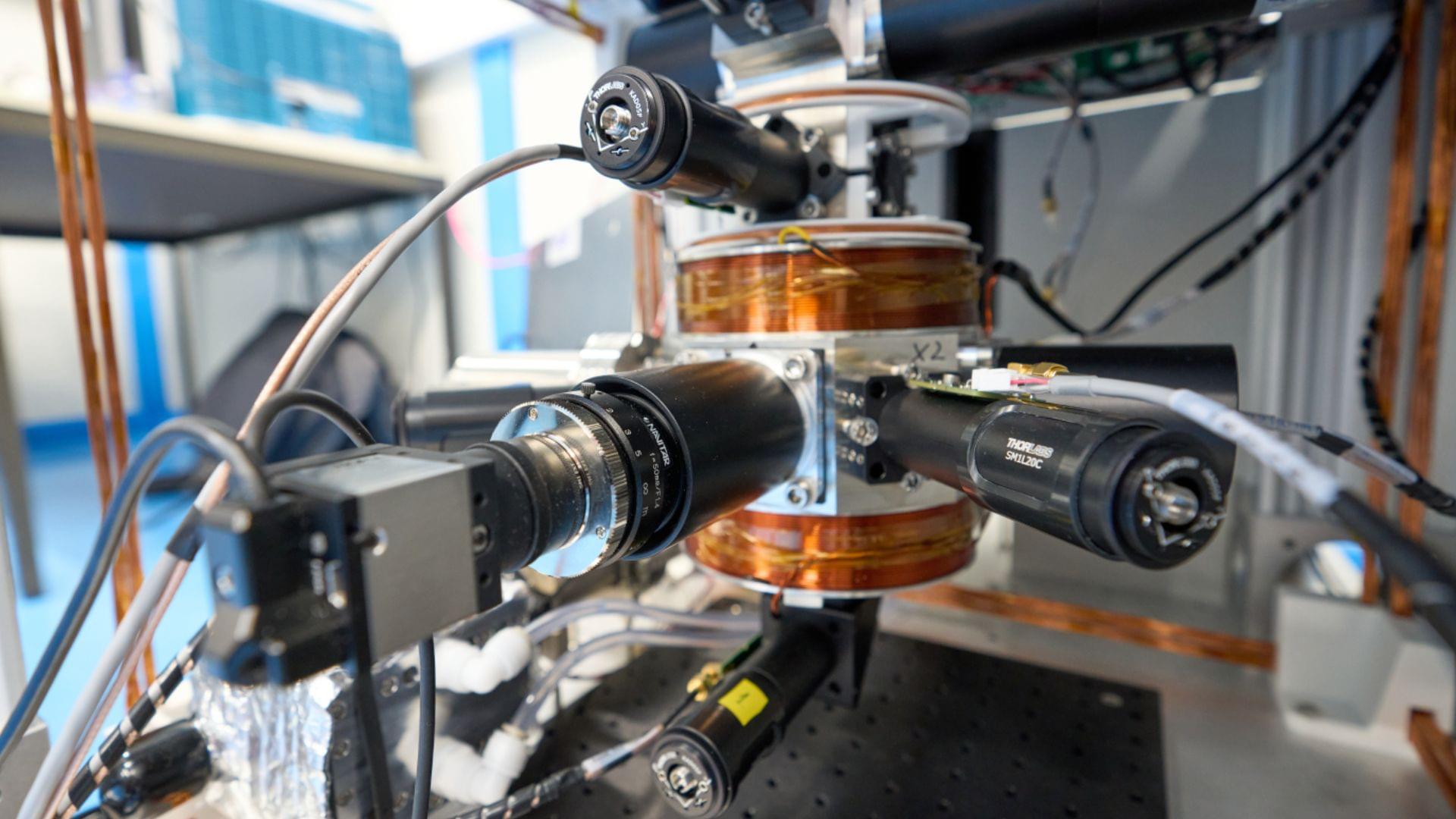February 2025 features Comet CK-25, observed with AI-driven telescopic networks for real-time imaging and analysis. A spectacular planetary alignment of Mercury, Venus, and Mars will be enhanced by augmented reality devices for interactive viewing. A partial lunar eclipse will occur on February 27th-28th, with an immersive experience via the Virtual Lunar Observation Platform (VLOP). Technological advancements highlight new methods of observing and interacting with space events, bridging Earth and the cosmos. February 2025 is set to mesmerize stargazers and tech enthusiasts alike, as the cosmos aligns with cutting-edge advancements in astronomical observation. This month isn’t just about celestial spectacles; it’s about witnessing how new technology is redefining our view of space from Earth.
Category: space – Page 66


Online test-time adaptation for better generalization of interatomic potentials to out-of-distribution data
Molecular Dynamics (MD) simulation serves as a crucial technique across various disciplines including biology, chemistry, and material science1,2,3,4. MD simulations are typically based on interatomic potential functions that characterize the potential energy surface of the system, with atomic forces derived as the negative gradients of the potential energies. Subsequently, Newton’s laws of motion are applied to simulate the dynamic trajectories of the atoms. In ab initio MD simulations5, the energies and forces are accurately determined by solving the equations in quantum mechanics. However, the computational demands of ab initio MD limit its practicality in many scenarios. By learning from ab initio calculations, machine learning interatomic potentials (MLIPs) have been developed to achieve much more efficient MD simulations with ab initio-level accuracy6,7,8.
Despite their successes, the crucial challenge of implementing MLIPs is the distribution shift between training and test data. When using MLIPs for MD simulations, the data for inference are atomic structures that are continuously generated during simulations based on the predicted forces, and the training set should encompass a wide range of atomic structures to guarantee the accuracy of predictions. However, in fields such as phaseion9,10, catalysis11,12, and crystal growth13,14, the configurational space that needs to be explored is highly complex. This complexity makes it challenging to sample sufficient data for training and easy to make a potential that is not smooth enough to extrapolate to every relevant point. Consequently, a distribution shift between training and test datasets often occurs, which causes the degradation of test performance and leads to the emergence of unrealistic atomic structures, and finally the MD simulations collapse15.




Are There Limits What Brains Can Learn?
Head to https://squarespace.com/artem to save 10% off your first purchase of a website or domain using code ARTEMKIRSANOV
Socials:
X/Twitter: https://twitter.com/ArtemKRSV
Patreon: / artemkirsanov.
My name is Artem, I’m a graduate student at NYU Center for Neural Science and researcher at Flatiron Institute.
In this video video we are exploring a fascinating paper which revealed the role of biological constraints on what patterns of neural dynamics the brain and cannot learn.
Link to the paper: https://www.nature.com/articles/s4159… small correction: I didn’t mention in this in the video, but the dimensionality-reduction process for BCI was two-stage. First, the source 90D neural activity was non-linearly projected to 10 using Factor analysis, and only after that 2D projections of this 10D space were shown as cursor positions. It doesn’t change the interpretation of the result, just wanted to be more technically correct about the methods. Outline: 00:00 Introduction 01:01 Temporal sequences 02:10 The experimental challenge 4:42 Biofeedback and BCIs as a research tool 7:30 Sponsor: Squarespace 8:44 Experimental setup 11:36 Two 2D projections of neural activity 12:53 Switching BCI mapping reveals activity constraints 14:46 Conclusion Icons by Freepik and Biorender Music by Artlist.
A small correction: I didn’t mention in this in the video, but the dimensionality-reduction process for BCI was two-stage. First, the source 90D neural activity was non-linearly projected to 10 using Factor analysis, and only after that 2D projections of this 10D space were shown as cursor positions. It doesn’t change the interpretation of the result, just wanted to be more technically correct about the methods.
Outline:
80-Megapixel Masterpiece Captures a Cosmic Nursery Bursting With Color and Energy
A breathtaking new image of the RCW 38 star cluster showcases a cosmic nursery bursting with color, light, and energy.
Located 5,500 light-years away, this region teems with young, newly formed stars and swirling clouds of glowing gas. The European Southern Observatory’s powerful VISTA telescope cuts through the dust to reveal hidden celestial wonders, offering astronomers a rare glimpse into the chaotic beauty of star birth.
A stunning glimpse of RCW 38.

Ionizing Radiation: how fungi cope, adapt, and exploit with the help of melanin
Life on Earth has always existed in the flux of ionizing radiation. However, fungi seem to interact with the ionizing radiation differently from other Earth’s inhabitants. Recent data show that melanized fungal species like those from Chernobyl’s reactor respond to ionizing radiation with enhanced growth. Fungi colonize space stations and adapt morphologically to extreme conditions. Radiation exposure causes upregulation of many key genes, and an inducible microhomology-mediated recombination pathway could be a potential mechanism of adaptive evolution in eukaryotes. The discovery of melanized organisms in high radiation environments, the space stations, Antarctic mountains, and in the reactor cooling water combined with phenomenon of ‘radiotropism’ raises the tantalizing possibility that melanins have functions analogous to other energy harvesting pigments such as chlorophylls.